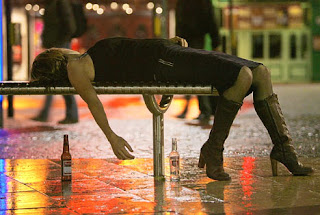Just as teacher behaviours would not be seen favourably in this context,
nor would they in this...
As a cross curriculum priority, the use of ICT's is likely to be embedded in our every day practice. The Australian Curriculum, Assessment and Reporting Authority suggest that by developing these capabilities, students:
- recognise intellectual property
- apply digital information security practices
- apply personal security protocols, and
- identify the impacts of ICT in society (ACARA, 2011).
This is consistent with the notions of copyright, student rights and responsibilities, storage and protection of digital information and online safety.
This website provides information sheets on a wide range of issues, and practical considerations for the use of ICT's in the classroom.
As much as we need to be aware of safety in classroom activities such as science experiments or manual arts projects, it is equally important that we pay the same respect to the potential risks in the digital world.
Some innovative ways to foster safe online learning environments can include:
- filtering websites before research activities and providing students with an explicit list for viewing
- raising awareness of issues and potential consequences
- making students accountable for their actions
- exploring the affordances of technological tools (e.g. 'closed viewing' or 'invitation only' online spaces and password protections)
- self awareness of legal responsibilities (e.g. the use of personal cameras), and
- applying preventative strategies to address health and safety issues
CyberNetrix is an interactive website, which creates a simulated online environment. The chat room simulation illustrates some of the potential risks and dangers, and shows just how quickly situations can get out of hand! It explores online and digital student safety, targeted at teenagers, exhibiting ease of navigation and easy to understand language.
By being aware of the many risks, and protocols in place to mitigate these, teachers are able to take action to protect themselves and model behaviours which promote safe, ethical and legal practices in students.
Protection strategies can include such obvious things as checking the security settings on your Facebook profile; a potential risk I hadn't previously considered!
References
Australian Curriculum, Assessment and Reporting Authority. (2011). Applying social and ethical protocols and practices when using ICT. Retrieved 7 April, 2013 from: http://www.australiancurriculum.edu.au/GeneralCapabilities/Information-and-Communication-Technology-capability/Organising-elements/Applying-social-and-ethical-protocols-and-practices-when-using-ICT


